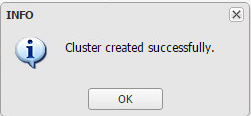For proper AlwaysOn server discovery and failover operations, the ‘SQL Server Browser Service’ must already be running on each of the database servers. For more information, refer to the following article: How to start and stop the SQL Server Browser Service.
Prerequisite
Before you begin:
- Complete setting up the network (make sure DNS and Search domain are set up correctly).
Ensure the following if you have configured Kerberos authentication:
- For an AlwaysOn Availability Group to work with Kerberos authentication, configure a single domain service account to start the SQL Server services for all instances in the Availability Group.
- Register this service account with the setspn command on a Domain Controller in the domain; add this SPN to the Delegation properties of the machine account for any system (such as ScaleArc) that are accessed through Kerberos authentication.
These requirements are documented for SQL Server 2012, which also contains links to the documentation for SQL Server 2014 and 2016. They are requirements for all Kerberos-authenticated clients, not just ScaleArc.
Configure AlwaysOn
To set up AlwayOn (SQL 2012 or newer AlwaysOn server), follow these steps:
On the ScaleArc dashboard, click the Clusters tab > Add Cluster button.
Complete setting up the ScaleArc endpoints and database access.
- Locate Servers on the Create Cluster screen. This is the third panel on the screen.
- Select Cluster for Server Type and AlwaysOn from the drop downs.

- Click Configure Server.
- Specify the Availability Group Listener/ Virtual Name Node/ Primary Node IP address of the Always ON setup.

-
Click on Fetch SQL Cluster Config. This will connect to the VNN server and fetch all the databases which are configured for this cluster. ScaleArc clips any database names that are too long. Hover on a database to see the full name.

- Click on Add Servers to add the selected servers to the AlwaysON Availability Group.
- The Start Cluster After Setup setting determines if the cluster is ON or OFF immediately following a setup.
- Click Setup Cluster to complete the configuration.
- If you have incorrectly configured the settings, you may see an error alert.
- Click OK. Any error appears in the Configuration log section of the screen. Review the details and address the error to complete the set up. Note that you can also download a copy of the error for your record.

- Click Finish to set up the cluster.
- When completed, the system posts a notification.

- The cluster appears in the control panel of the dashboard. It displays the Always ON configuration.

- If you selected the checkbox (its default setting) in Start Cluster After Setup, the cluster's green icon indicates that the cluster is already running. If you deselected this option, the cluster icon is red, indicating that you need to start the cluster. Click START in the second column to run the cluster. The icon turns green. Click STOP to halt the cluster.

Comments